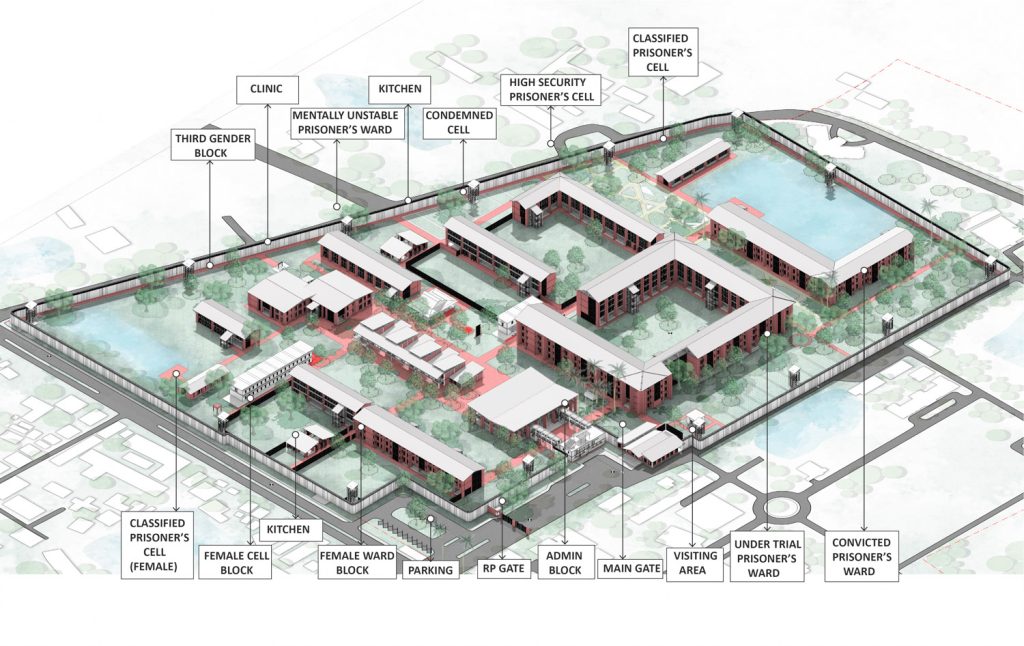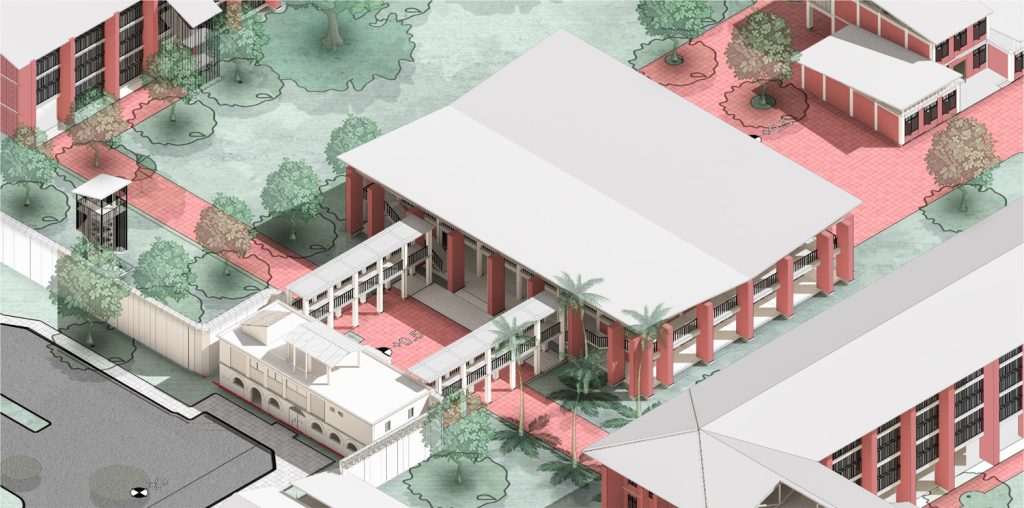Zareen Tasnima, a Bachelor of Architecture student at North South University, developed her undergraduate thesis project titled “Hope Rehabilitation Centre, Rajshahi” under the guidance of Ar. Mozaffaruddin Chowdhury, with Arnob Faraz as the teaching assistant, as part of Studio ARC 596 in Spring 2024.

Once a place of pain and punishment, the Rajshahi Central Jail is being reimagined as a centre of healing and reform. Built in the 1840s, the old jail holds a heavy history—dark cells like the Shul Ghor (nail chamber), the Kobor Cell (grave cell), and memories of the Khapra Ward massacre of 1950. But instead of wiping away its past, the proposed Hope Rehabilitation Centre chooses to transform it. The project turns this once-feared space into a model of dignity, discipline, and recovery, where prisoners are treated as people with a chance to rebuild their lives.

The design keeps many of the site’s original structures intact. Historic spots like the Domohola and the old hospital are preserved and converted into training and vocational facilities. Temporary, ill-planned blocks make way for new, well-designed buildings that blend with the site’s old trees, making nature and heritage both part of the healing process.

In today’s overcrowded Rajshahi Jail, around 3,100 inmates live in a space meant for 1,460. Nearly 59% are still waiting for trial, while about 40% are convicted. The rest fall under high-security and condemned categories. In one-person cells, four to five prisoners often share the same space with no privacy, no beds, and poor ventilation. Wards that hold 20–25 people are stuffy and unhygienic, leaving inmates physically weak and mentally distressed. There is little structure in their day, no real education, training, or programs for self-improvement.
The Hope Rehabilitation Centre aims to change that. The new design follows the Nelson Mandela Rules, focusing on humane living, health, and rehabilitation. Each cell is designed to hold only one or three inmates, with proper beds, step-down washrooms, and large windows for light and air. Wards are modular, with improved sanitation, organized layouts, and shared spaces that encourage interaction instead of isolation.
Beyond living spaces, the centre introduces classrooms, clinics, and production zones where inmates can learn and work. Carpentry, bakery, textiles, electronics, and computer programming workshops help build real-world skills. Separate clinics ensure both physical and mental healthcare, while therapeutic gardens filled with flowering and medicinal plants bring calm and positivity. The greenery isn’t just aesthetic, it helps reduce stress and gives prisoners a sense of purpose through gardening and nature care.

The overall campus layout is inspired by the idea of openness. Different functional blocks, cells, wards, clinics, administration, and training zones, are spread out across the site and connected through green courtyards and walkways. This ensures security while allowing natural light, ventilation, and a sense of movement. Even though it remains a high-security facility, the environment feels humane and balanced.


The Hope Rehabilitation Centre represents a significant shift in Bangladesh’s correctional architecture. It replaces punishment with purpose, turning a place of trauma into a place of hope. This project highlights how the environment shapes human behavior, turning architecture into a tool for healing, where the sound of birds replaces clanging gates and gardens replace grey courtyards. It shows that rehabilitation is not only about reforming individuals but rebuilding lives. By helping inmates regain skills, confidence, and purpose, the Hope Rehabilitation Centre envisions a more humane and compassionate future for justice in Bangladesh.



